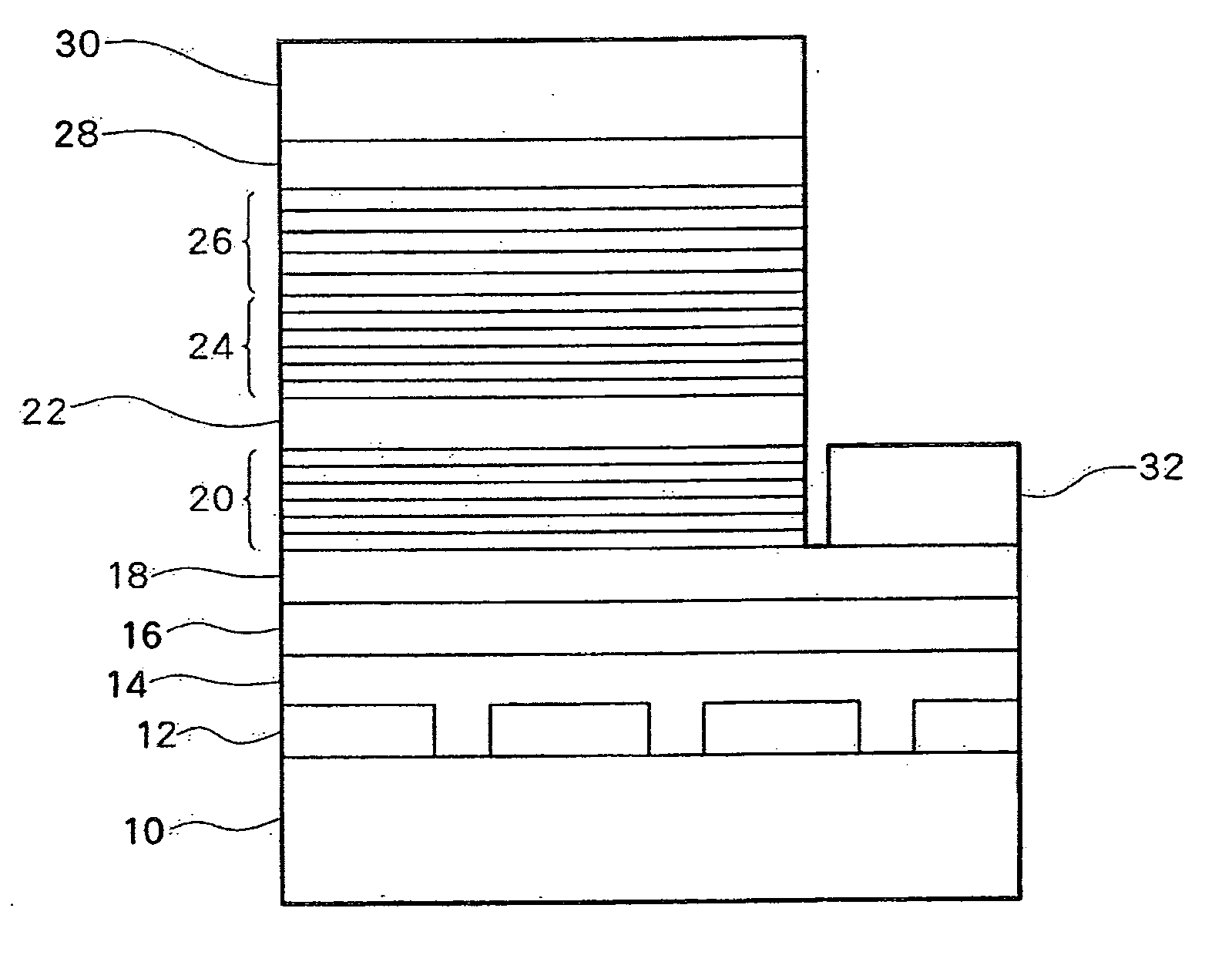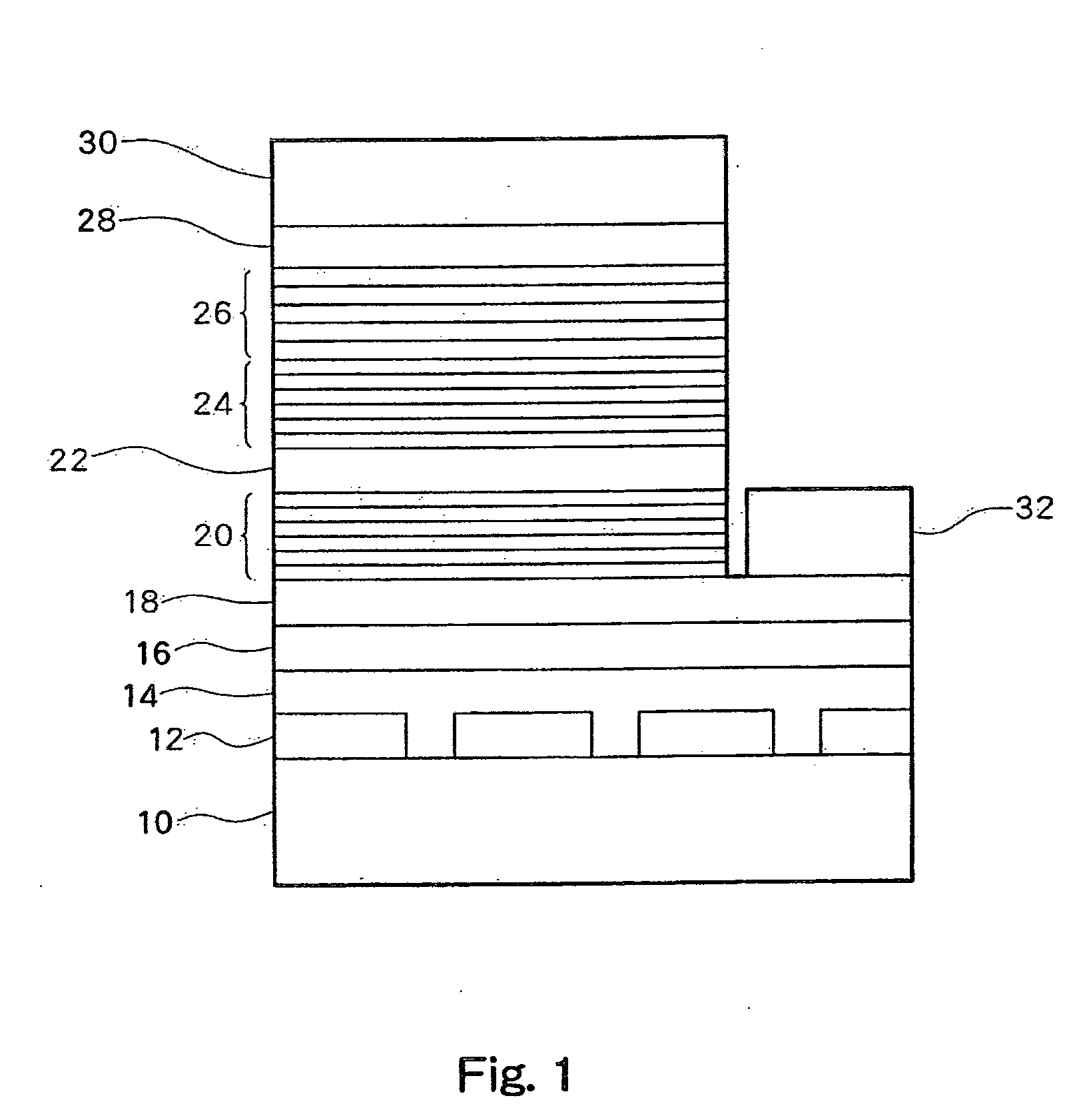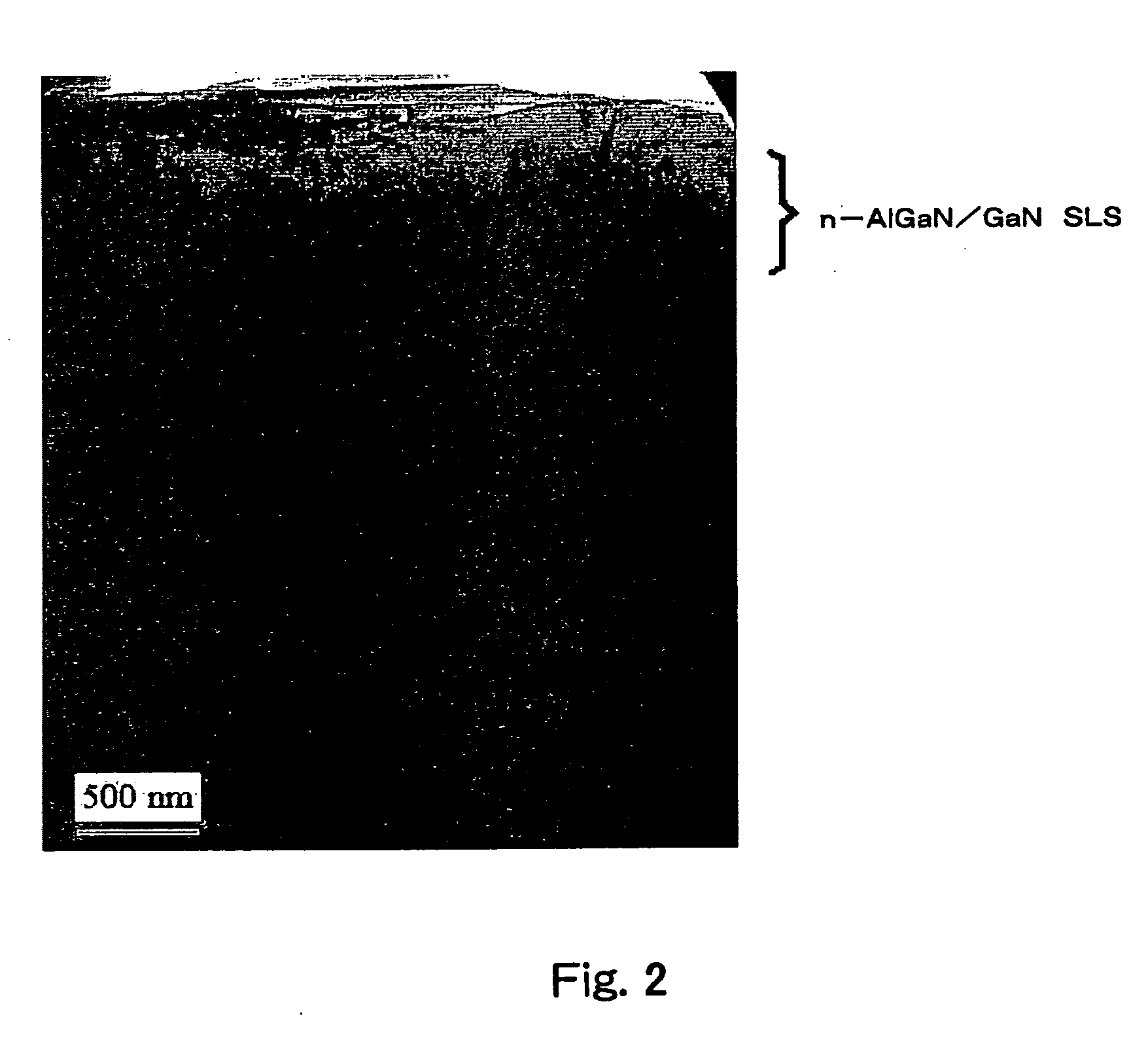Gallium nitride compound semiconductor device and manufacturing method
a technology of gallium nitride and semiconductor devices, applied in semiconductor devices, nanooptics, electrical apparatus, etc., can solve the problems of insufficient capture of carriers, insufficient efficiency reduction, and labor-intensive manufacturing, and achieve the effect of superior light emission efficiency
- Summary
- Abstract
- Description
- Claims
- Application Information
AI Technical Summary
Benefits of technology
Problems solved by technology
Method used
Image
Examples
first preferred embodiment
[0026]FIG. 1 shows a structure of a light emitting element (LED) which is a GaN-based compound semiconductor according to a first preferred embodiment of the present invention. The light emitting element is manufactured by growing a plurality of layers on a substrate through an MOCVD method (Metal Organic Chemical Vapor Deposition). More specifically, the light emitting element is manufactured through the following processes. First, an MOCVD device will be briefly described, although the MOCVD device itself is well known in the art. A susceptor and a gas introduction tube are provided within a reaction tube. A substrate is placed on the susceptor and a material gas is supplied while the substrate is heated by a heater to let a reaction occur on the substrate. The gas introduction section is provided, for example, at two locations of the reaction tube. A material gas such as trimethyl gallium and silane gas is introduced from one location from a lateral direction of the substrate and...
second preferred embodiment
[0058] When texts, objects, or the like are drawn by a commercially available black pen (fluorescent pen), the drawn objects cannot be seen under visible light illumination, but can be seen when an ultraviolet ray is irradiated onto the drawn objects. Although a color black pen (a color object appears when ultraviolet ray is irradiated) is also commercially available, in order to reproduce colors, the wavelength of the ultraviolet ray to be irradiated must be 400 nm or shorter, more precisely, 380 nm or shorter. In the related art, a light source such as a fluorescence black light or a mercury lamp is used. However, these light sources are large and consume large power and there is a problem in that a large-scale power supply is necessary.
[0059] When the light emitting element device (LED) as shown in FIG. 1 is used as a light source for reproducing the drawn objects, the device is small and can be driven by a battery. Objects drawn by a black pen were reproduced by irradiating lig...
third preferred embodiment
[0062] The LED according to the present embodiment was irradiated onto the skin of a human body for a short period of time and the effects of the irradiation were observed. Light was irradiated from LEDs having peak wavelengths of 400 nm (5 mW), 385 nm (3 mW), and 372 nm (1 mW) onto the skin for 10 minutes and changes in the skin (commonly referred to as “tanning”) were observed. As a result, it was found that in the case of the LED of peak wavelength of 400 nm (5 mW), there was almost no effect while there was some change in the case of the LED of 385 nm (3 mW). In the case of the LED of 372 nm (1 mW), on the other hand, there was significant tanning. These results show that the LED in the wavelength band of 365 nm-380 nm causes tanning of the human body. Tanning devices were manufactured using the LED as a light source. A tanning device which allows tanning of a spot of a diameter of 5 mm and a tanning device in which LEDs were placed on a straight line having a length of 3 cm to ...
PUM
 Login to View More
Login to View More Abstract
Description
Claims
Application Information
 Login to View More
Login to View More - R&D
- Intellectual Property
- Life Sciences
- Materials
- Tech Scout
- Unparalleled Data Quality
- Higher Quality Content
- 60% Fewer Hallucinations
Browse by: Latest US Patents, China's latest patents, Technical Efficacy Thesaurus, Application Domain, Technology Topic, Popular Technical Reports.
© 2025 PatSnap. All rights reserved.Legal|Privacy policy|Modern Slavery Act Transparency Statement|Sitemap|About US| Contact US: help@patsnap.com



